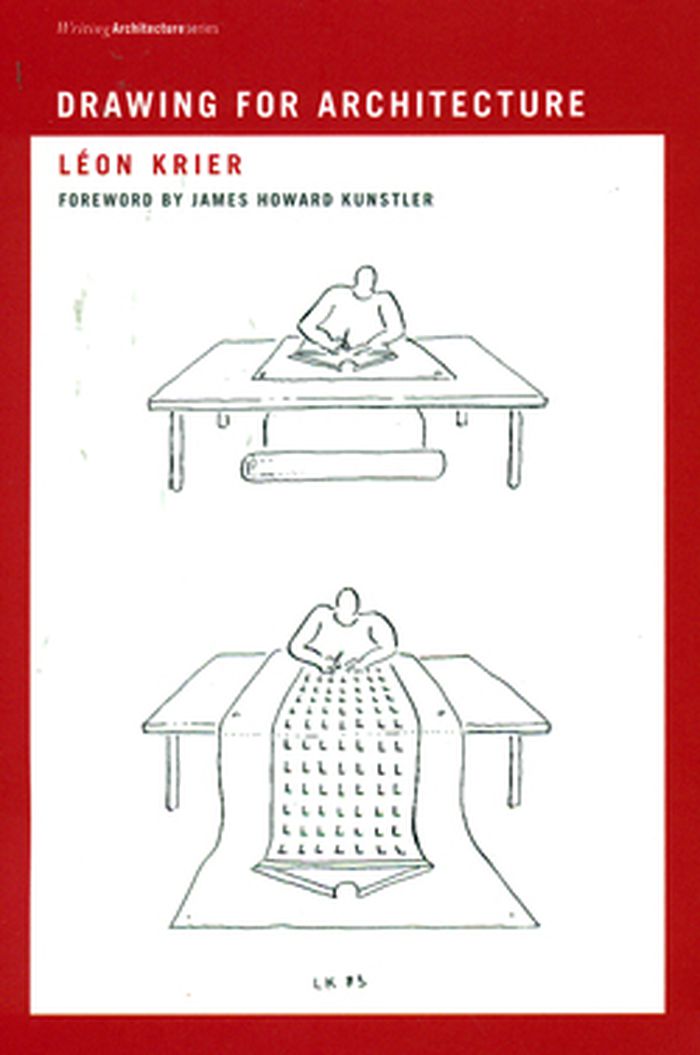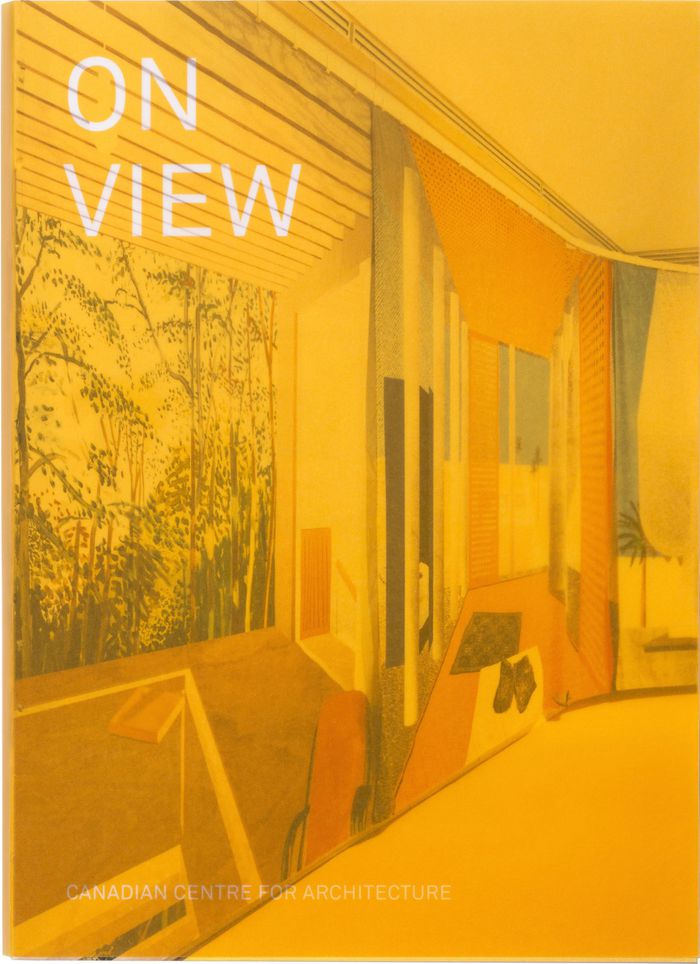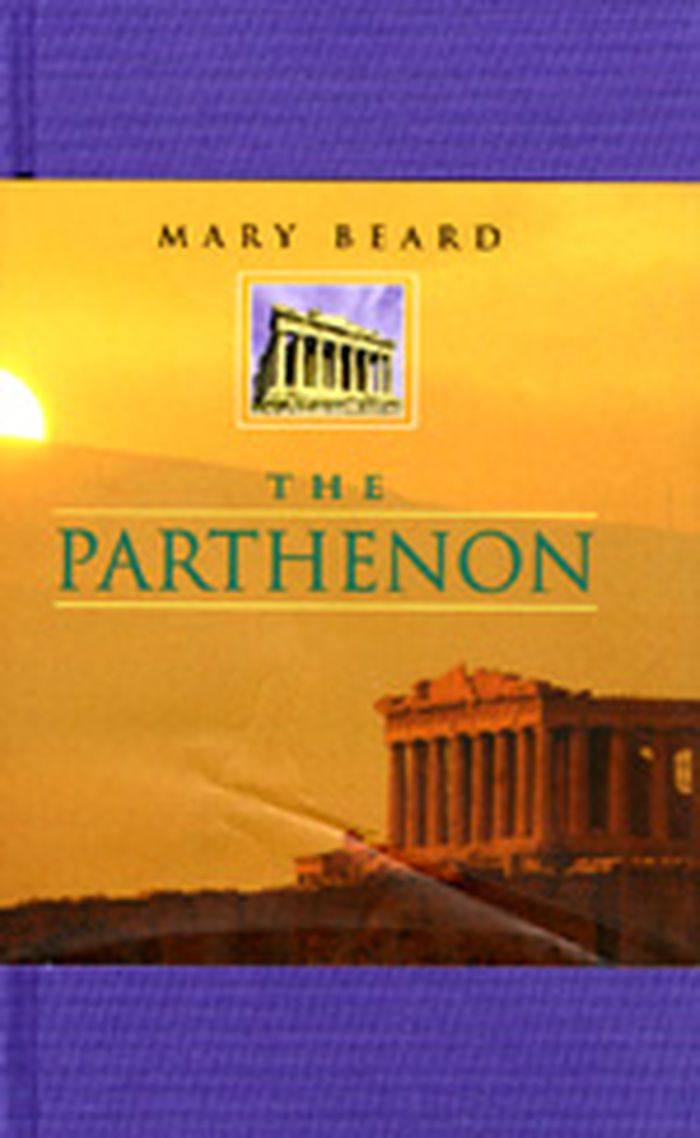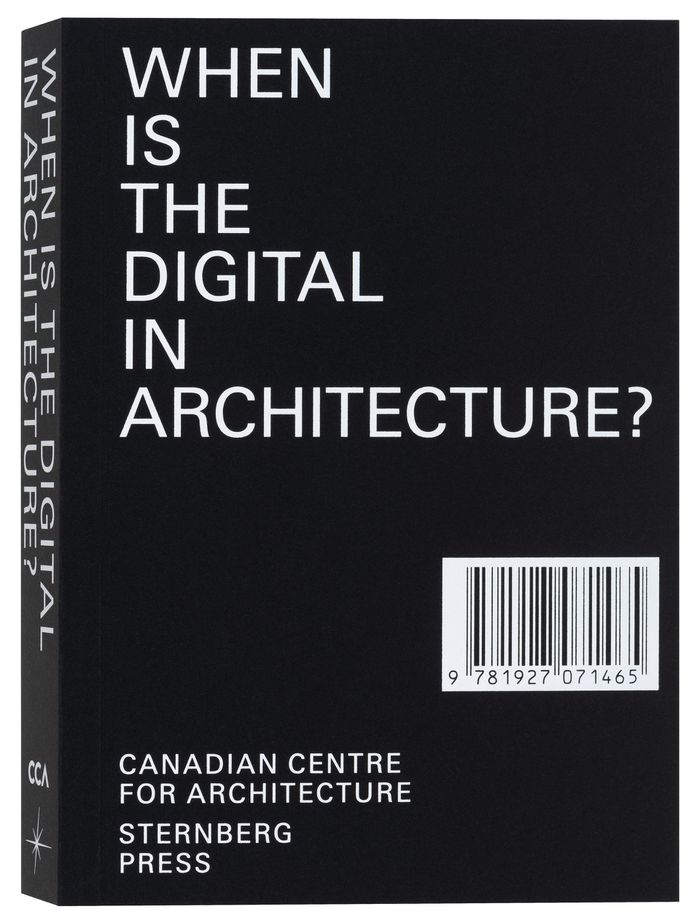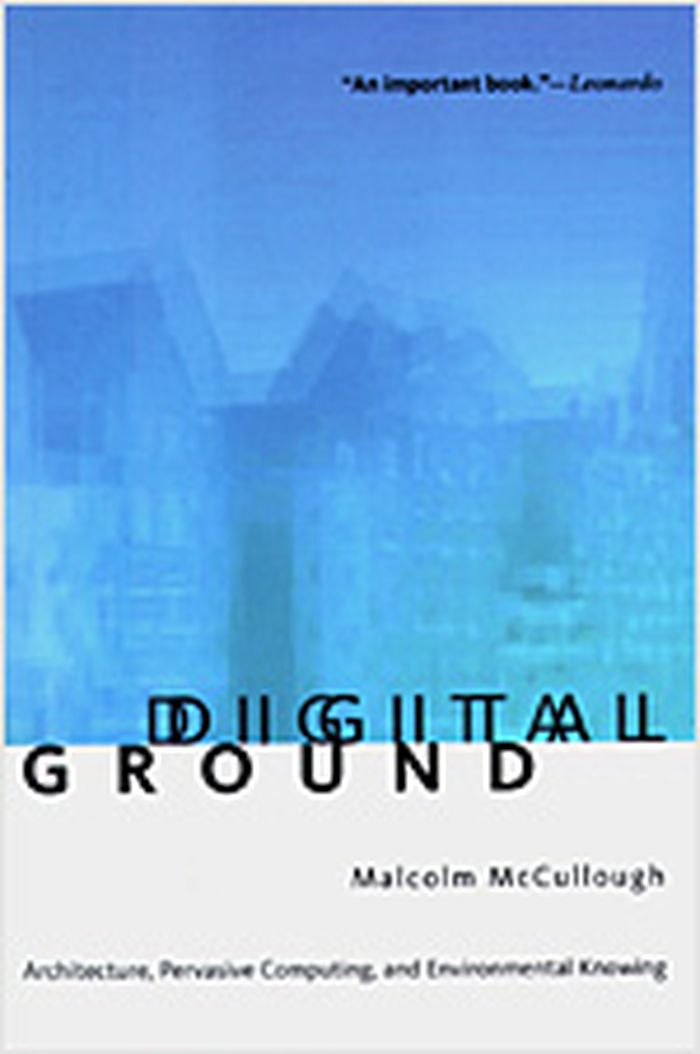books
Description:
xvi, 261 pages : illustrations ; 24 cm.
Chicago : University of Chicago Press, 2001.
From cottage to bungalow : houses and the working class in metropolitan Chicago, 1869-1929 / Joseph C. Bigott.
Actions:
Holdings:
Description:
xvi, 261 pages : illustrations ; 24 cm.
books
Chicago : University of Chicago Press, 2001.
$60.00
(available to order)
Summary:
Since the Boyer of 1996 of "Building Communities: A New future for Architectural Education and Practice" there has been some movements in architectural and design schools and practitioners exploring ways to inculcate a concern for larger social issues in the design process. Several alternative approaches to the education, practice of architecture and urban design have(...)
January 2024
Participatory design thinking in urban design education
Actions:
Price:
$60.00
(available to order)
Summary:
Since the Boyer of 1996 of "Building Communities: A New future for Architectural Education and Practice" there has been some movements in architectural and design schools and practitioners exploring ways to inculcate a concern for larger social issues in the design process. Several alternative approaches to the education, practice of architecture and urban design have emerged rooted in the Social Architecture based on four groups of participants; the private visionary; the public professional with a vision; the professional based at non-profit organizations and the activist university. The urban laboratory model is one such model housed in the activist university. One of the arguments for this methodology is that it would lead to a better place-making process.
books
$43.95
(available to order)
Summary:
In a series of cogent and balanced arguments, Harries questions the premises on which architects and theorists have long relied--premises which have contributed to architecture's current identity crisis and marginalization. He first criticizes the aesthetic (...)
The ethical function of architecture
Actions:
Price:
$43.95
(available to order)
Summary:
In a series of cogent and balanced arguments, Harries questions the premises on which architects and theorists have long relied--premises which have contributed to architecture's current identity crisis and marginalization. He first criticizes the aesthetic approach, focusing on the problems of decoration and ornament. He then turns to the language of architecture. If the main task of architecture is indeed interpretation, in just what sense can it be said to speak, and what should it be speaking about? Expanding upon suggestions made by Martin Heidegger, Harries also considers the relationship of building to the idea and meaning of dwelling. Architecture, Harries observes, has a responsibility to community; but its ethical function is inevitably also political. He concludes by examining these seemingly paradoxical functions.
books
September 1998, Cambridge, Mass.
Architectural Theory
Drawing for architecture
$43.95
(available to order)
Summary:
Architect Léon Krier's doodles, drawings, and ideograms make arguments in images, without the circumlocutions of prose. Drawn with wit and grace, these clever sketches do not try to please or flatter the architectural establishment. Rather, they make an impassioned argument against what Krier sees as the unquestioned doctrines and unacknowledged absurdities of(...)
September 2009
Drawing for architecture
Actions:
Price:
$43.95
(available to order)
Summary:
Architect Léon Krier's doodles, drawings, and ideograms make arguments in images, without the circumlocutions of prose. Drawn with wit and grace, these clever sketches do not try to please or flatter the architectural establishment. Rather, they make an impassioned argument against what Krier sees as the unquestioned doctrines and unacknowledged absurdities of contemporary architecture. In an age of energy crisis, he writes (and his drawings show), we "build in the wrong places, in the wrong patterns, materials, densities, and heights, and for the wrong number of dwellers"; a return to traditional architectures and building and settlement techniques can be the means of ecological reconstruction. Each of Krier's provocative and entertaining images is worth more than a thousand words of theoretical abstraction.
CCA on view
$10.95
(available in store)
Summary:
"CCA on View" is a visual guidebook to the exhibitions produced by the Canadian Centre for Architecture since its founding in 1979. From "The Preservation and Conservation of Prints and Drawings of Ernest Cormier (1885–1980)", mounted in the lobby of the Canadian Centre for Architecture’s first office space in 1982, to" Besides, History", exhibited in 2017 in the main(...)
CCA on view
Actions:
Price:
$10.95
(available in store)
Summary:
"CCA on View" is a visual guidebook to the exhibitions produced by the Canadian Centre for Architecture since its founding in 1979. From "The Preservation and Conservation of Prints and Drawings of Ernest Cormier (1885–1980)", mounted in the lobby of the Canadian Centre for Architecture’s first office space in 1982, to" Besides, History", exhibited in 2017 in the main galleries of the CCA’s current building at 1920, rue Baile, each exhibition is presented through installation views, photographs of exhibition objects, previously unpublished working documents, and short descriptive statements. These artifacts, interspersed with commentary from CCA directors, curators, and collaborators, illustrate the central positions and arguments taken up in each project. "CCA on View" delves into the institutional archives to highlight the character and trajectory of the CCA’s approach to curatorial research.
CCA Publications
The Parthenon
$25.95
(available to order)
Summary:
At once an entrancing cultural history and a congenial guide for tourists, armchair travelers, and amateur archaeologists alike, this book conducts readers through the storied past and towering presence of the most famous building in the world. Who built the Parthenon, and for what purpose? How are we to understand its sculpture? Why is it such a compelling monument? The(...)
The Parthenon
Actions:
Price:
$25.95
(available to order)
Summary:
At once an entrancing cultural history and a congenial guide for tourists, armchair travelers, and amateur archaeologists alike, this book conducts readers through the storied past and towering presence of the most famous building in the world. Who built the Parthenon, and for what purpose? How are we to understand its sculpture? Why is it such a compelling monument? The classicist and historian Mary Beard takes us back to the fifth century B.C. to consider the Parthenon in its original guise--as the flagship temple of imperial Athens, housing an enormous gold and ivory statue of the city's patron goddess attended by an enigmatic assembly of sculptures. Just as fascinating is the monument's far longer life as cathedral church of Our Lady of Athens, as "the finest mosque in the world," and, finally, as an inspirational ruin and icon. Beard also takes a cool look at the bitter arguments that continue to surround the "Elgin Marbles," the sculptures from the Parthenon now in the British Museum.
History until 1900, Greece
The Reichstag graffiti
$52.50
(available to order)
Summary:
The walls of the Reichstag are covered with graffiti, written by victorious Soviet soldiers in 1945. Hidden for 30 years, the Reichstag graffiti were rediscovered by Norman Foster and his team when they began work on the building in 1995. They were preserved as part of Foster’s concept of the Reichstag as a ‘living museum’ of German history. Published at a time when the(...)
March 2003, Berlin
The Reichstag graffiti
Actions:
Price:
$52.50
(available to order)
Summary:
The walls of the Reichstag are covered with graffiti, written by victorious Soviet soldiers in 1945. Hidden for 30 years, the Reichstag graffiti were rediscovered by Norman Foster and his team when they began work on the building in 1995. They were preserved as part of Foster’s concept of the Reichstag as a ‘living museum’ of German history. Published at a time when the graffiti are threatened with eradication, this book offers an important visual and literary record. Deborah Lipstadt considers the arguments for and against the preservation of the graffiti: is the preservation, as some charge, "morally offensive" and "masochistic" or does it indicate a brave determination not to forget the tragedies of the past? And what does it mean and say about Germany today? Frederick Baker considers the graffiti as a monument to the individual and offers an historical account of the Battle of Berlin through the eyes of Red Army soldiers as they approached their ultimate goal, including the soldier who first raised the Red Flag above the Reichstag. This illustrated volume allows the inscriptions to be made accessible and understandable to a wider public for the first time.
books
$45.00
(available to order)
Summary:
In this book, Richard Hill examines the many-faceted relationship between aesthetic theory and architecture. Grounding his arguments in the practical issues related to building - the demands of site, materials, labor force, the nature of the commission - Hill expands our understanding and enjoyment of architecture. The book opens with an analysis of the relationship(...)
Designs and their consequences
Actions:
Price:
$45.00
(available to order)
Summary:
In this book, Richard Hill examines the many-faceted relationship between aesthetic theory and architecture. Grounding his arguments in the practical issues related to building - the demands of site, materials, labor force, the nature of the commission - Hill expands our understanding and enjoyment of architecture. The book opens with an analysis of the relationship between buildings, drawings, and designs. Hill suggests that architectural drawings are essentially pictures of physical objects, although initially they may be imagined ones, and he considers the implications of this for architects and builders. He discusses the notion of "architectural experience" that has been important in the development of modern architecture, and the notion of "seeing as" that has been developed for other visual arts and that illuminates a range of architectural meaning. Asking how architecture can be expressive of a range of human states and qualities, Hill tests the idea that our ability to see the expressive aspects of buildings relates to our ability to see meaning in the faces and demeanor of other people. In the final section of the book, the author focuses on modern architecture's central aim to deepen the connection between usefulness and design, explores recent intense criticism of this outlook, and assesses the strengths and weaknesses of this body of criticism.
books
August 1999, New Haven
Architectural Theory
$42.00
(available in store)
Summary:
When is the digital in architecture? What are the conditions that led architects to integrate digital tools into their practices? Over the course of the Archaeology of the Digital research program, the CCA has collected the archival records of twenty-five projects realized between the late 1980s and the early 2000s in order to understand this moment as a point of origin(...)
When is the digital in architecture?
Actions:
Price:
$42.00
(available in store)
Summary:
When is the digital in architecture? What are the conditions that led architects to integrate digital tools into their practices? Over the course of the Archaeology of the Digital research program, the CCA has collected the archival records of twenty-five projects realized between the late 1980s and the early 2000s in order to understand this moment as a point of origin for the digital. But if we take care to identify the digital as a condition that is made possible by the conceptual foundations of digital media and not necessarily by digital media itself, the boundaries of the digital moment—when it began and under what circumstances—become less clear. There are eight million stories of the origins of the digital in architecture, and this book brings together fourteen of them in a chronology of responses to the question of when the digital is in architecture. The arguments address specific changes in ways of thinking about architecture, building, and cities, as well as the shifts in technology that resulted from these changes, marking both a capstone to Archaeology of the Digital and the beginning of an investigation of other beginnings of the digital in architecture. Asking a question like When is the digital in architecture? can produce eight million stories in response, and eight million digressions and redirections that narrow in focus and change geographies, producing a Tristram Shandy of the digital as the CCA continues to build its digital archive and makes it increasingly accessible to researchers. If this novel of digressions is distributed across future research projects and extended with studies of new archival material, so much the better for the reader, in our opinion.
CCA Publications
$21.50
(available to order)
Summary:
Digital Ground is an architect's response to the design challenge posed by pervasive computing. One century into the electronic age, people have become accustomed to interacting indirectly, mediated through networks. But now as digital technology becomes invisibly embedded in everyday things, even more activities become mediated, and networks extend rather than replace(...)
Digital ground : architecture, pervasive computing, and environmental knowing
Actions:
Price:
$21.50
(available to order)
Summary:
Digital Ground is an architect's response to the design challenge posed by pervasive computing. One century into the electronic age, people have become accustomed to interacting indirectly, mediated through networks. But now as digital technology becomes invisibly embedded in everyday things, even more activities become mediated, and networks extend rather than replace architecture. The young field of interaction design reflects not only how people deal with machine interfaces but also how people deal with each other in situations where interactivity has become ambient. It shifts previously utilitarian digital design concerns to a cultural level, adding notions of premise, appropriateness, and appreciation. Malcolm McCullough offers an account of the intersections of architecture and interaction design, arguing that the ubiquitous technology does not obviate the human need for place. His concept of "digital ground" expresses an alternative to anytime-anyplace sameness in computing; he shows that context not only shapes usability but ideally becomes the subject matter of interaction design and that "environmental knowing" is a process that technology may serve and not erode. Drawing on arguments from architecture, psychology, software engineering, and geography, writing for practicing interaction designers, pervasive computing researchers, architects, and the general reader on digital culture, McCullough gives us a theory of place for interaction design. Part I, "Expectations," explores our technological predispositions -- many of which ("situated interactions") arise from our embodiment in architectural settings. Part II, "Technologies," discusses hardware, software, and applications, including embedded technology ("bashing the desktop"), and building technology genres around life situations. Part III, "Practices," argues for design as a liberal art, seeing interactivity as a cultural -- not only technological -- challenge and a practical notion of place as essential. Part IV, "Epilogue," acknowledges the epochal changes occurring today, and argues for the role of "digital ground" in the necessary adaptation.
Architectural Theory

